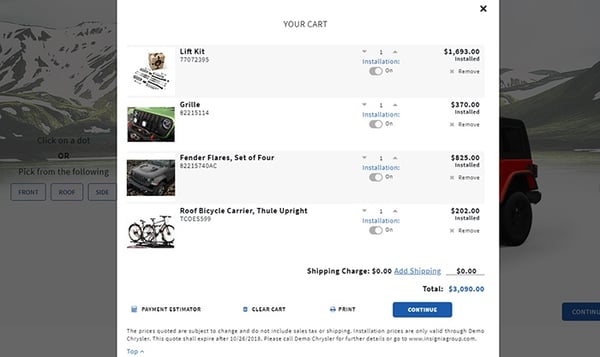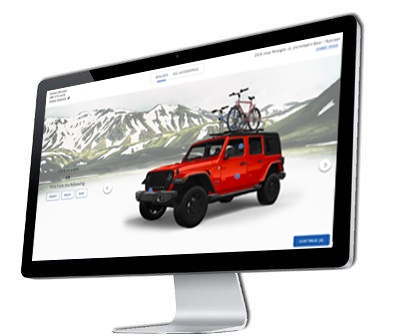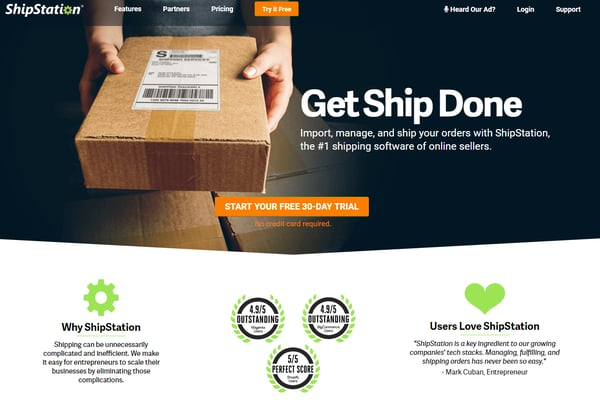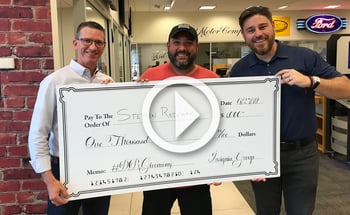*updated August 10, 2021
Thinking about selling auto parts online for the first time? Online parts sales are growing steadily year over year, and this growth is expected to continue for the foreseeable future. Right now consumers are becoming more accustomed to buying parts and accessories online. Fortunately, the tools for selling parts and accessories online have never been better.

Still, while it's a great time to start selling parts and accessories online, it's also difficult for new e-commerce retailers to get established. If this is the first time you’re looking for an auto parts e-commerce platform, there are some things you can do to maximize your odds of success and avoid common mistakes.

Step 1 - Get a Handle on Order Fulfillment
If your dealership is new to selling parts online, then pulling orders off the shelf, packing them in a box, and shipping them out the door probably doesn't sound complicated. But here's the thing: pull, pack, and ship is where most first-time parts retailers lose the most money.
Fulfillment orders include these five best practices:
- Designating a single individual to be responsible for managing all orders.
- Verifying fitment for every order to minimize returns.
- Having a plan to process and ship (when possible) each order the day it's placed.
- Establishing a communication plan for every back-ordered and/or discontinued part to notify consumers, and avoid a customer service problem later.
- Making sure everyone involved in fulfillment is cognizant of fraudulent behavior.
Whether you're a franchised auto dealer selling OEM parts from inventory or a performance shop selling aftermarket parts via drop-ship, these best practices apply. Using one of the best e-commerce platforms for auto parts can significantly cut down the confusion and organize the process.
Step 2 - Embrace the Phone
A lot of first time e-commerce retailers assume that consumers will be able to buy parts or accessories without any sort of support. While this is often the case, a good percentage of consumers prefer to complete a transaction over the phone.
- Consumers want a phone call to verify details that aren't found on the website.
- Some consumers may call to seek clarity on a section of your website that isn't 100% clear to them.
- Other consumers may have doubts about your website, and will place a phone call as a way to evaluate the company before buying.
- Many consumers prefer to order by phone because they perceive it to be more secure.
Whatever the customer's reason for calling, it's important to treat each and every phone call as a sales opportunity—ask for the sale! And, staff should be secret-shopped periodically to ensure they're attempting to sell every customer they speak with over the phone.
If you're an auto dealer, it's important to properly train staff to speak with retail parts customers by phone. When we secret-shop our dealership clients that are selling OEM car parts online, we often find that phone support staff lacks polish and often don’t ask for the sale.
Finally, it is not smart for staff to answer a customer's question on the phone and then tell them to "just go ahead and order on the website." If the customer on the phone is ready to buy, take their money over the phone. This shouldn't need to be said, although it’s frighteningly common.
![]()
Step 3 – Check Your Pricing
If you're selling OEM parts or accessories online, you'll find that many of the companies selling parts online are working with a very small margin. Many OEM parts are sold for dealer cost—plus 10-15%, which is considerably less than retail part pricing. Of course, if your OEM parts store is going to compete, your pricing will need to be in line with the competition. Be sure to check your part pricing against the top ranked sellers in your niche.
Additionally, if you're working with an OEM parts and accessories e-commerce software, it's a good idea to check your shipping pricing against the competition as well. While consumers don't compare shipping costs as often as they compare part costs, it's smart to make sure both parts and shipping costs are competitive.
If you're selling aftermarket parts or accessories, many of them are subject to MAP (minimum advertised price) policies. MAP policies provide for healthy margins (cost plus 30-40% is typical); although most aftermarket parts online sellers give away a good chunk of this margin by providing free shipping anywhere in the continental USA. So, if you're selling aftermarket, it's important to evaluate your competitor's shipping policies.
Step 4 - Create a Website Marketing Plan
Many first time auto parts e-commerce software users believe that if they build a good site the consumers will come. Sadly, this is not at all the case. If a parts’ e-commerce website is going to generate enough profit to be a good investment, one to two years of marketing effort is usually required.
E-commerce marketing is typically focused in five areas:
- Search Engine Optimization (SEO) – If your website ranks highly on Google, Bing, or Yahoo, you can receive hundreds (or thousands) of website visitors every day. To have a highly-ranked site, you need several levels of content. Your store needs content about the company and its policies, content for landing pages, blog posts that help potential customers, and you need a plan to create high-profile content that will earn links (check out our blog post about auto parts marketing content to learn more).
- Email Marketing - Email isn't sexy. Though it does work most of the time. If you have a customer's email address, you want to send them a regular newsletter to develop a relationship. Of course, emailing a coupon, special offer, or new product announcement is a good idea too!
- Social Media Marketing - For those selling car parts online, social media is a great tool for raising product awareness and building word of mouth referrals. For other retailers (like OEM replacement part retailers), social media is mostly a tool for customer retention. A good social media strategy reflects your customer base.
- Conversion Rate Optimization and Usability Testing - While most e-commerce platforms are better now than they've ever been in terms of usability, most websites have basic usability problems. What's more, there's usually a disconnect between what consumers care about and what parts e-commerce software users want to talk about. Therefore, conversion and usability testing is an important part of any marketing activity.
- Pay-Per-Click (PPC) Advertising – While it can be argued that advertising isn't exactly "marketing," it's safe to say that any online parts retailer needs to have a PPC strategy. It can be very limited and focused only on retargeting, or can include general awareness about brand ads, top search terms, etc. PPC is, however, a key part of the marketing "mix" for every retailer.
Most parts retailers will find marketing a bit overwhelming. Still, a little bit of time spent learning the basics is usually a good investment. If nothing else, a good understanding of the basics makes it easier to hire a marketing agency that will do a good job.

A Note About Best E-commerce Platforms for Auto Parts
Last, and certainly not least: if your company is still evaluating e-commerce platforms, it's important to evaluate each platform from both a fulfillment and marketing perspective.
In terms of fulfillment, you want an e-commerce platform that will connect with a fulfillment tool like ShipStation or ShipWorks. It's also a good idea to make sure the e-commerce platform will interface with your inventory and accounting software. For dealerships, this often means looking for a platform that works with the DMS.
In terms of marketing, there are a handful of features that should be considered essential:
- Platforms that can be customized in terms of look and feel are also important. Conversion and usability testing is pointless if you can't make changes based on test results. If you can't add blog posts to the site or create landing pages with unique content, you should keep looking. Platforms that can't support your content strategy are hard to grow.
- Generally speaking, the more control you have over the nuts and bolts of your site, the better. Platforms should allow you to add javascript to a page, integrate Google Analytics, create 301 redirects, edit page layouts, and upload images/PDFs to a media folder—whatever you need to highlight your online presence.
How Insignia Group Can Help Your Auto Parts E-commerce Platform
Insignia Group is not an e-commerce platform, although we do work with many auto e-commerce platforms through our API like RevolutionParts. E-commerce is a great platform if you want to sell parts like lug nuts and easily installed accessories like all-weather mats. It is not a great option if your dealership would like the payment for installation or you are looking to sell bigger ticket items that require more work to install. Insignia Group works both in the showroom to sell accessories for new vehicles and with digital retailers/e-commerce to sell accessories through the dealership online. We provide an interactive, 3D catalog of vehicle brands and the OE or aftermarket accessories that go with them. To bring an additional $250k+ in revenue to your dealership, our accessory sales tool is the one for you.
This is a guest post by Jason Lancaster, President of Spork Marketing. Spork is an online marketing agency that specializes in auto parts and accessories marketing.





